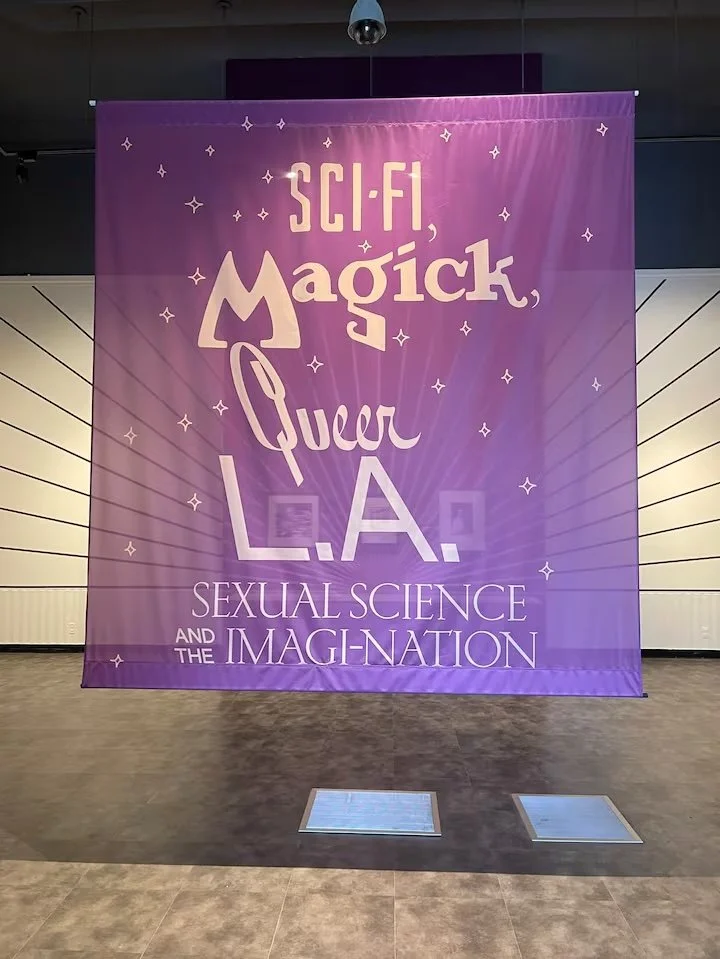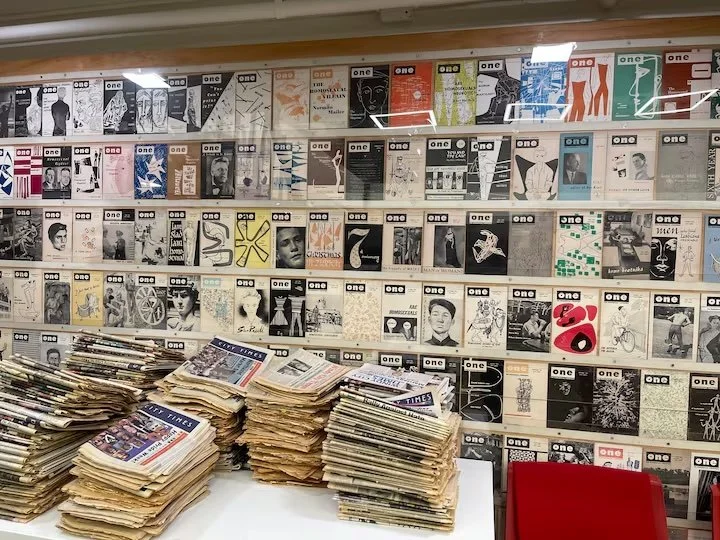Sci-fi exhibition showcases LGBTQ+ history at USC Fisher Museum
How science fiction stories uplift the importance of self-expression.
By Sheridan Hunter and Angie Pulmano
October 15, 2024 at 9:10PM PDT
“You take the blue pill, the story ends, you wake up in your bed and believe whatever you want to believe... You take the red pill, you stay in Wonderland, and I show you how deep the rabbit hole goes.”
That’s a famous quote from the classic ‘90s sci-fi film, “The Matrix.” This film is often pegged as an allegory of the transgender experience.
For queer folks, the choice they’re faced with is between living less restricted lives enforced by societal norms and suppression of their identities. Sometimes that means exploring community in underground creative spaces.
(Photo by Sheridan Hunter)
Lexi Bard Johnson is the curator for the “Sci-Fi, Magick, Queer L.A.: Sexual Science and the Imagi-Nation” exhibit. It is an accumulation of work from artists, writers, filmmakers and musicians from the early 1930s to 1960s at the USC Fisher Museum. The pieces are sourced from a collection called the One Archives.
“One Archives at USC Libraries is one of the largest LGBTQ archives in the world,” Johnson said.
When people think of LGBTQ+ liberation, they think of Stonewall — the New York queer bar uprising that sparked the Gay Rights movement.
“We’re really pre-Stonewall,” Johnson said. “We’re pre-identity formation of kind of LGBTQ, but in the sense of queerness as existing outside the norms.”
Vilification and suppression of queerness was intertwined into societal norms, and the One Archive studies a time before the Gay Rights Movement gained mainstream traction.
“We can imagine society where homosexuality isn’t persecuted, like we’re looking at the 1950s really in this exhibition, ‘30s, ‘40s, ‘50s, and you if you’re out in the civil service, you can be fired for being gay.” Johnson said. “And so, you know, obviously there’s real hope and desire for things to be different. I think some of that hope comes from science fiction becoming science and reality.”
One Archive zine collection, primary source of documentation for the Sci-Fi, Queer, Magick L.A. exhibit. (Photo by Sheridan Hunter)
For example, one of the major highlights of this exhibition is historical figure, Jim Kepner, who was one of the named writers that helped found the One Archive. According to the Association of LGBTQ+ Journalists, he documented witch hunts, exposed the police and liquor control tactics that targeted queer communities and organized rallies that fought for visibility within the Gay Rights movement.
According to Johnson, “If you want to imagine a different way of being a society where norms are different, where we think about gender differently or race or class — you know, different kind of priorities or value statements based on different identities or different mashups. Science fiction is a great avenue for you.”
Fernando Contreras, a security officer at the museum and working actor in L.A., said that the exhibit inspired him.
“I would say it’s given me a lot more insight than I thought the world would be. Basically the way that I thought the creative process of sci-fi as well,” he said. “I thought it was just simple aliens and outer space and Avengers. It turned out to be also an expressive viewpoint of the queer community as well.”
He also commented on the imaginative ways the exhibit showcases, “living outside of the box, to bring in any sort of ideas from this world, whether it’s from sci-fi or magic.”
When it comes to science and queerness, oftentimes the two ideas clash. Opponents of queer liberation, when explaining their perspective, often cite biological norms and gender binaries such as a wife and husband having a child, or young girls playing with Barbie dolls while young boys play with action figures.
Johnson explained where this thought comes from, “I mean, I think the modern idea is that science is rational. Science is you have a hypothesis test to hear the results, and it’s very kind of laboratory based.”
In contrast, sci-fi transcends the laboratory and allows queer communities to be true to themselves.
“If you want to imagine a different way of being, a society where homosexuality isn’t persecuted, where you know the male gender isn’t revered, all sorts of things, you can imagine that in science fiction,” Johnson said.

